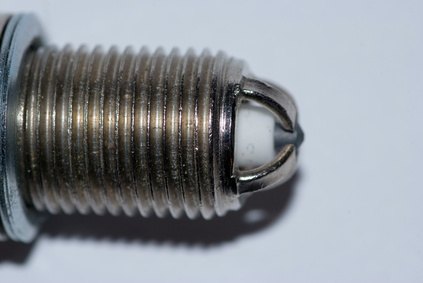Friday, May 9, 2014
How to Install a Fuel Injector on a Ford F150

Ford F-150 fuel injectors are designed for long life. While regular cleaning will keep the fuel injectors performing well, fuel injectors have moving parts that wear out. Worn or broken fuel injectors result in inadequate or too much fuel being consumed during the combustion process. Incorrect fuel combustion may result in damage to the engine or catalytic converter. Fuel injectors which are worn or damaged should be replaced. To avoid future failures, if one fuel injector has gone bad due to wear and tear, replacement of all the injectors is recommended.
Instructions
Access the Fuel Injectors
- 1
Depressurize the fuel system. If your vehicle is equipped with a fuel safety cut-off switch--usually located on the passenger side front foot panel on the F-150--access and remove the electronic plug. This will disable the fuel pump. Turn on the engine several times to remove any fuel pressure in the lines. The engine will not stay started, this is normal.
2Disconnect the battery cables to avoid fire hazards when working with fuel.
3Remove any engine shroud, air intake tube, vacuum lines and other bolt-on accessories that restrict access to the fuel rails. Unbolt the fuel rail from the engine. The metal fuel rail will be braced to the engine with one or two bolts.
4Remove the fuel injector electronics plug from each injector to be replaced.
5Lift the fuel rails off the fuel injectors. Lift the end of the fuel rail closest to the bumper and pop each fuel injector free. Some injectors will stay in the engine and others will remain in the fuel rail. All injectors that are freed from either the engine or fuel rail will need new o-rings.
6Remove the fuel injector from both the engine and the fuel rail. Inspect the injector for missing o-rings. Two o-rings should exist, one for the top connection on the fuel rail, and one for the bottom connection to the engine. Locate the missing o-rings and discard.
Replace the Injectors
- 7
Replace the o-rings with new o-rings. Lubricate the new o-rings with motor oil and slide over the ends of the fuel injectors. New injectors commonly come with o-rings installed. Lubricate the pre-installed o-rings with motor oil. A drop of oil on your finger smeared on the o-ring is sufficient.
8Insert the new fuel injector into the engine hole. Press downward until the fuel injector is seated properly. A popping sensation may be felt, but not always. Pull upward on the injector. A properly seated injector will resist removal.
9Replace all o-rings on the injectors from which the fuel rail was removed. Replace the fuel rail on each injector.
10Bolt the fuel rail to the engine and replace any bolt-on accessories removed to access the fuel rail. Replace the fuel injector electronics plugs. Replace any vacuum lines removed. Replace the air intake tube. Replace the engine shroud, if equipped.
11Reconnect the battery. Reconnect the fuel safety cut-off switch plug. Turn the ignition key to the electronics only mode for five seconds and turn off. Repeat the ignition key on/off sequence twice to allow the fuel pump to pressurize the fuel line. Inspect the fuel rails for leaks and repair. If necessary, return to step 1.
12Start the vehicle to confirm installation.
No comments:
Post a Comment